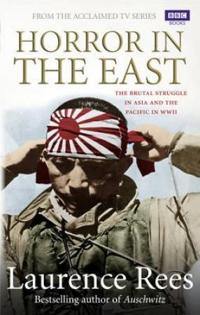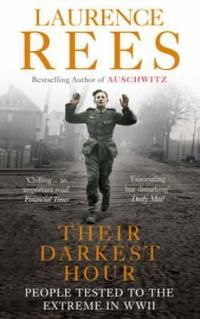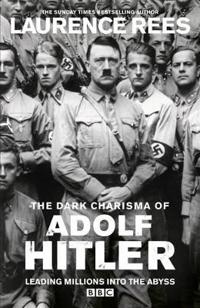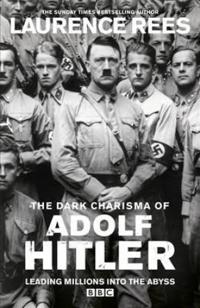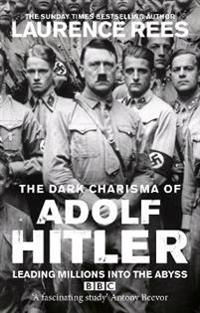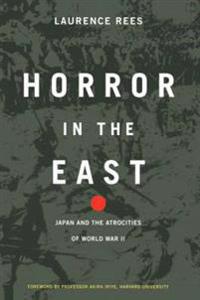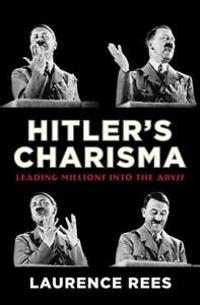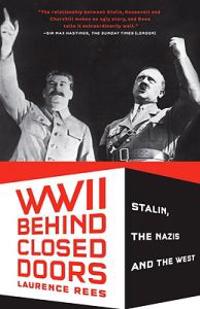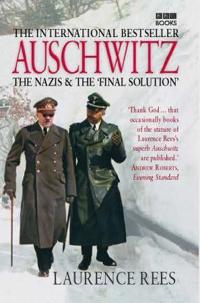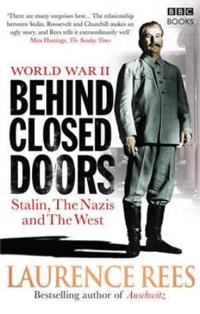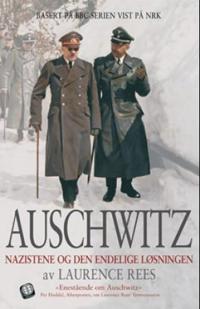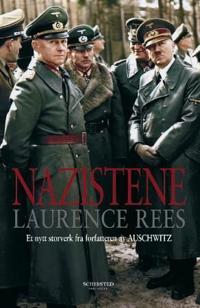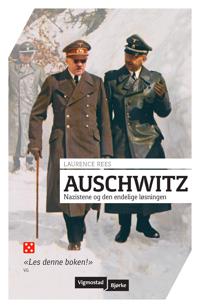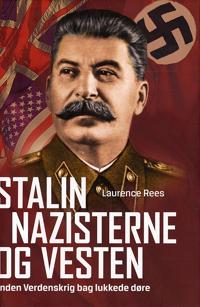Horror in the East (Storpocket)
avLaurence Rees, Laurence Rees
ISBN: 9781849901673 - UTGIVEN: 201107The brutal Japanese treatment of allied prisoners of war, as well as countless thousands of Chinese civilians, during World War 2 has been well documented. Here Laurence Rees, award-winning historian and author of Auschwitz: The Nazis & The 'Final Solution' and World War II: Behind Closed Doors, tur[...]
Their Darkest Hour (Häftad)
avLaurence Rees
ISBN: 9780091917593 - UTGIVEN: 200806How could Nazi killers shoot Jewish women and children at close range? Why did Japanese soldiers rape and murder on such a horrendous scale? How was it possible to endure the torment of a Nazi concentration camp? In this title, the author presents 35 of his encounters.[...]
Dark Charisma of Adolf Hitler (Inbunden)
avLaurence Rees
ISBN: 9780091917630 - UTGIVEN: 201209Adolf Hitler was an unlikely leader - fuelled by hate, incapable of forming normal human relationships, unwilling to debate political issues - and yet he commanded enormous support. So how was it possible that Hitler became such an attractive figure to millions of people? That is the important quest[...]
The Dark Charisma of Adolf Hitler (Pocket)
avLaurence Rees
ISBN: 9780091917654 - UTGIVEN: 201306Adolf Hitler was an unlikely leader - fuelled by hate, incapable of forming normal human relationships, unwilling to debate political issues - and yet he commanded enormous support. So how was it possible that Hitler became such an attractive figure to millions of people? That is the important quest[...]
Horror in the East (Inbunden)
avLaurence Rees
ISBN: 9780306811784 - UTGIVEN: 2002-09The question is as searing as it is fundamental to the continuing debate over Japanese culpability in World War II and the period leading up to it: "How could Japanese soldiers have committed such acts of violence against Allied prisoners of war and Chinese civilians?" During the First World War, th[...]
Hitler's Charisma: Leading Millions Into the Abyss (Inbunden)
avLaurence Rees
ISBN: 9780307377296 - UTGIVEN: 2013-04Fuelled by hate, incapable of forming normal human relationships, unwilling to listen to dissenting voices, Adolf Hitler seemed an unlikely leader, and yet he commanded enormous support and was able to exert a powerful influence over those who encountered him. How did Hitler become such an attractiv[...]
Hitler's Charisma: Leading Millions Into the Abyss (Häftad)
avLaurence Rees
ISBN: 9780307389589 - UTGIVEN: 2014-01At the age of twenty-four, in 1913, Adolf Hitler was eking out a living as a painter of pictures for tourists in Munich. Nothing marked him in any way as exceptional, but he did possess certain distinguishing characteristics: a capacity to hate, an inability to accept criticism, and a massive overco[...]
World War II Behind Closed Doors: Stalin, the Nazis and the West (Häftad)
avLaurence Rees
ISBN: 9780307389626 - UTGIVEN: 2010-05Auschwitz (Häftad)
avLaurence Rees
ISBN: 9780563522966 - UTGIVEN: 2005-09Shows how Auschwitz evolved from a concentration camp for Polish political prisoners into the site of the largest mass murder in history - part death camp, part concentration camp, where around a million Jews were killed. This book examines the mentality and motivations of the key Nazi decision make[...]
Auschwitz (Pocket)
avLaurence Rees
ISBN: 9781586483579 - UTGIVEN: 2006-01Insights gleaned from more than one hundred original interviews shed new light on history's most notorious death camp, with the testimonies of survivors providing a detailed portrait of the camp's inner workings.[...]
World War Two: Behind Closed Doors (Häftad)
avLaurence Rees
ISBN: 9781846077944 - UTGIVEN: 2009-08Provides a 'behind the scenes' history of the West's dealings with Joseph Stalin. This book is a mix of high politics and the often heart-rending personal experiences of those on the ground. It intends to make you rethink what you believe about World War II.[...]
Auschwitz; nazistene og den endelige løsningen (Inbunden)
avLaurence Rees
ISBN: 9788251622103 - UTGIVEN: 2005Denne boken er skrevet til sekstiårsdagen for Auschwitz' frigjøring. Vi får vite hvordan Auschwitz utviklet seg fra å være en konsentrasjonsleir for polske politiske fanger til å bli åstedet for historiens største massemord, dels dødsleir, dels konsentrasjonsleir hvor over en million mennes[...]
Nazistene (Inbunden)
avLaurence Rees
ISBN: 9788251622820 - UTGIVEN: 2006Boka gjør et forsøk på å trenge inn i nazismens natur, og finne ut hvorfor nazistene og deres allierte handlet som de gjorde. Forfatteren mener at deres støtte til det tredje rike henger sammen med følelser og tro fremfor rasjonelle tanker, og peker på kvasireligiøse aspekter ved nazismen. H[...]
Auschwitz; nazistene og den endelige løsningen (Pocket)
avLaurence Rees
ISBN: 9788282710084 - UTGIVEN: 2011Den høyt respekterte forfatteren og programlederen Laurence Rees den fullstendige historien om den mest grusomme av alle nazi-institusjoner. Vi får vite hvordan Auschwitz utviklet seg fra å være en konsentrasjonsleir for polske politiske fanger til å bli åstedet for historiens største massemo[...]
Stalin, nazisterne og Vesten (Inbunden)
avLaurence Rees
ISBN: 9788776920968 - UTGIVEN: 2010Den udbredte opfattelse af Anden Verdenskrig er, at den var en alliance af gode mennesker, der kæmpede mod en alliance af onde mennesker. Det er en meget opmuntrende mÃ¥de at se pÃ¥ fortiden pÃ¥, og det er trist at tage afsked med den. Men tage afsked med den â det bliver vi nødt ti[...]

